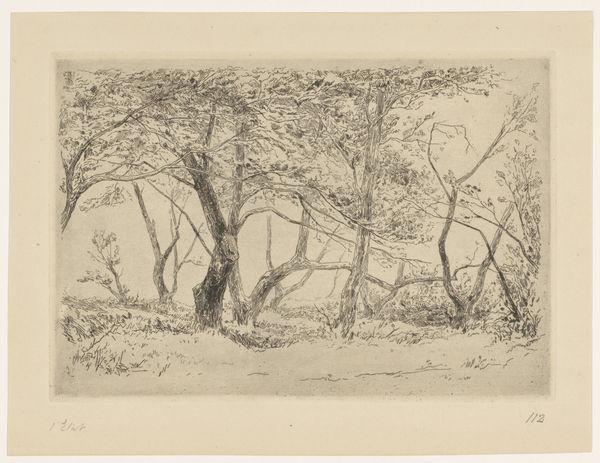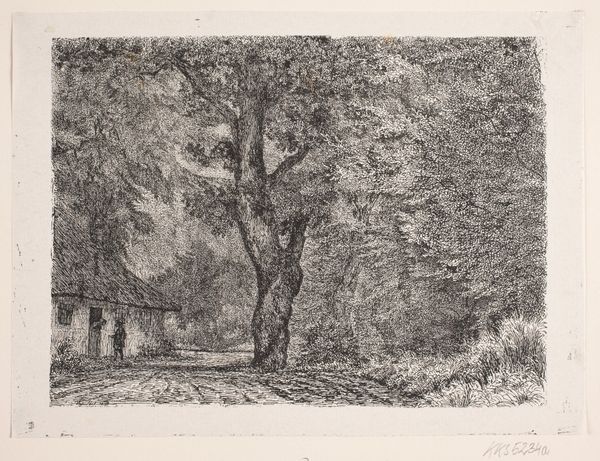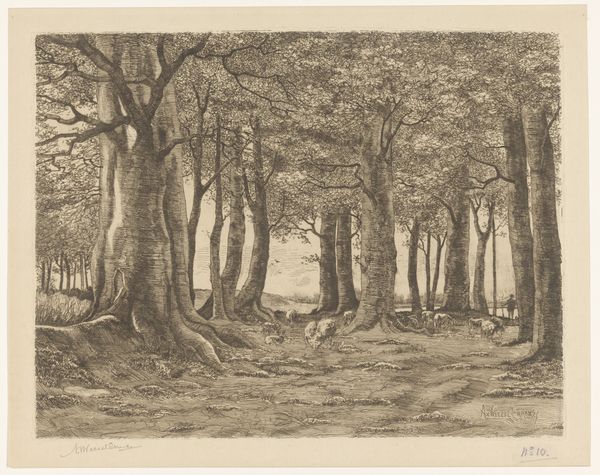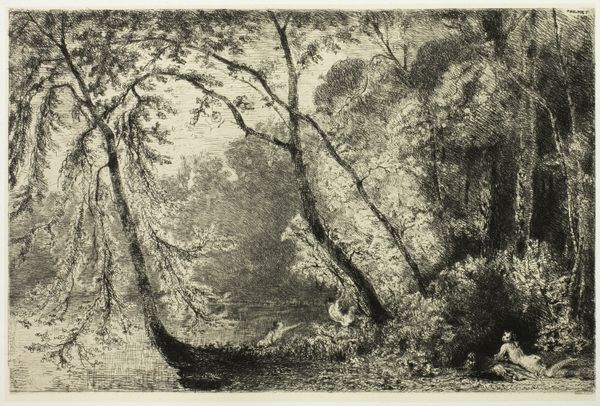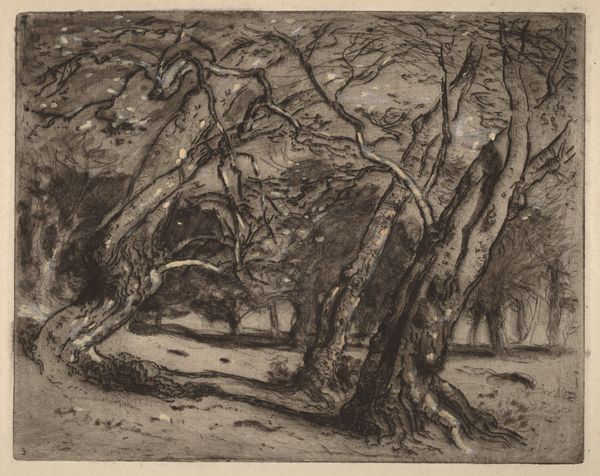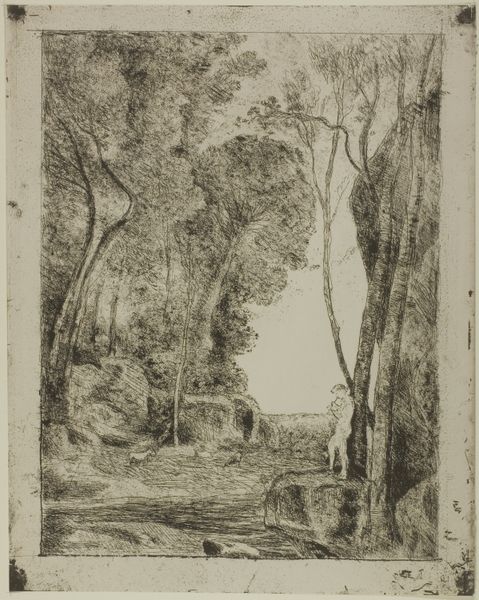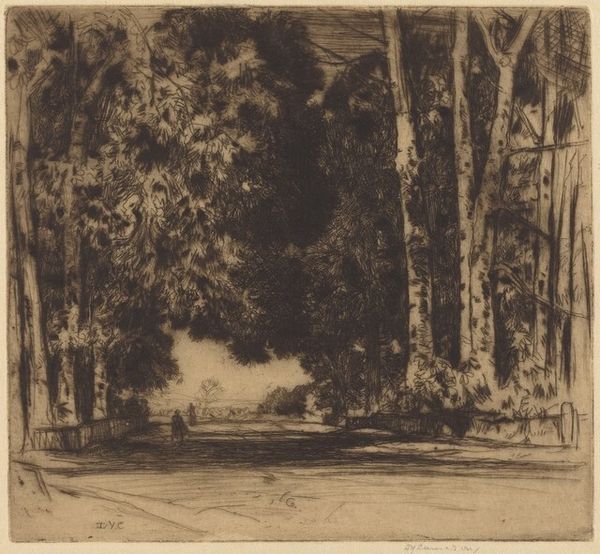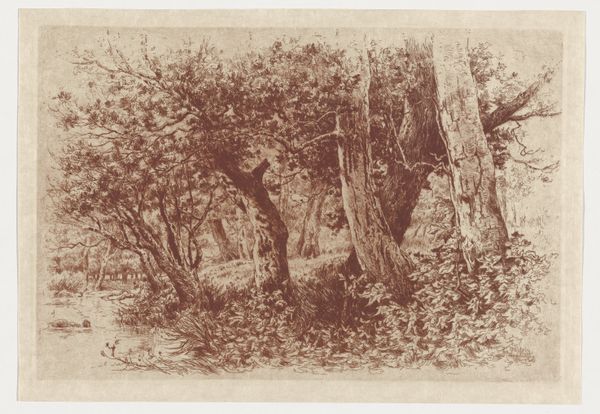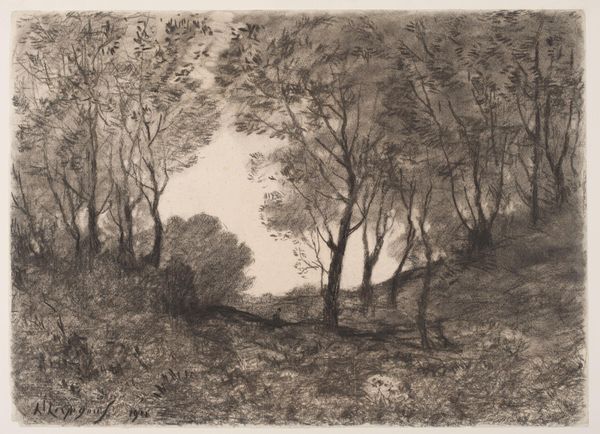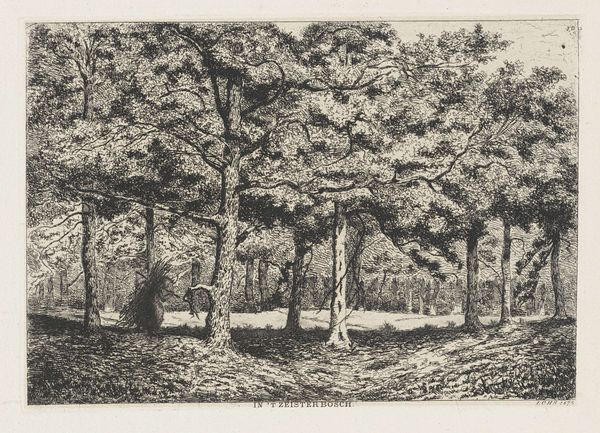
drawing, print, etching, paper
#
drawing
# print
#
etching
#
landscape
#
paper
#
line
Dimensions: 186 × 263 mm (image/plate); 227 × 327 mm (sheet)
Copyright: Public Domain
Editor: Auguste-Louis Lepère's 1911 etching, "Sous Bois, à la Rigonette," presents us with a dense forest scene rendered with incredibly fine lines. The scale seems intimate. How do we even begin to understand the significance of a print like this today? Curator: Well, first, look closely at the materials themselves: the paper, the ink, and most importantly, the etched metal plate. The entire process hinges on the artist's labor and skill in manipulating these materials. Consider how Lepère, working in a time of burgeoning industrialization, chose such a laborious, hand-crafted medium. Why etching rather than, say, a quicker photographic process? Editor: That's interesting. It feels almost like a conscious choice to value traditional methods. Was he perhaps responding to mass production? Curator: Precisely! He's making a statement about the value of skilled labor in a rapidly changing world. Notice how the subject matter – a natural, untouched woodland – contrasts with the urban environments and mechanized industries of his era. He is showing us something beyond surface representations of landscape. Etching allowed for multiple prints, affordable art for a wider audience. How does that potentially democratize access to imagery in that period, given the societal structures and patterns of consumption? Editor: So, by choosing etching, Lepère isn't just creating a picture; he's engaging with broader social and economic issues, connecting art making, consumption, and class structure. Curator: Exactly. It's a physical manifestation of his values. By examining the materials and processes, we uncover the artist’s intentionality and critique of his time. Editor: That reframes the whole work for me. It's no longer just a landscape; it's a commentary embedded in the very act of its creation. Thank you! Curator: My pleasure. Considering art's material existence often reveals these powerful insights.
Comments
No comments
Be the first to comment and join the conversation on the ultimate creative platform.
